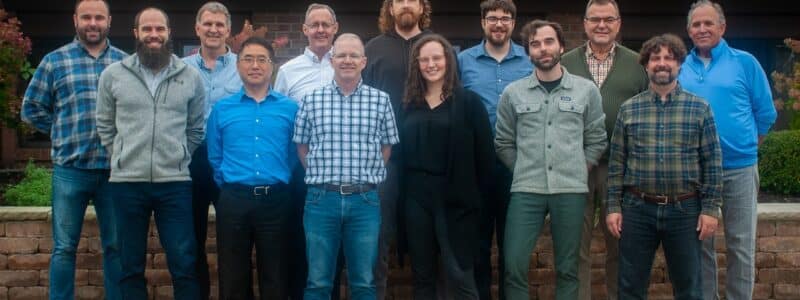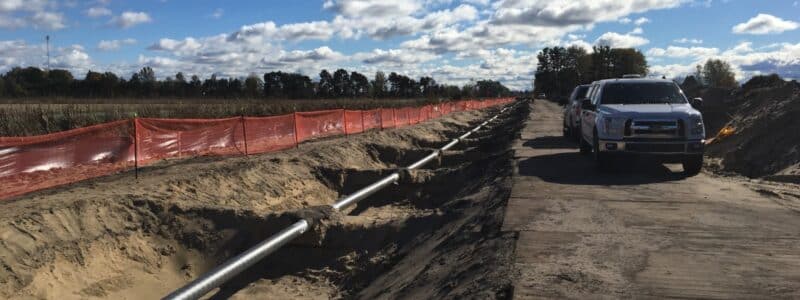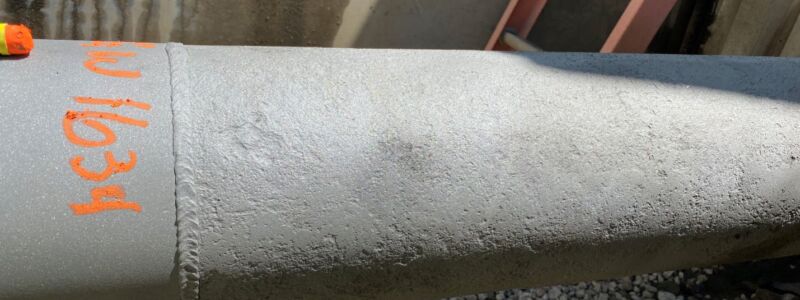Building a successful integrity team
- As a Project Manager, you don’t have to do each job on the team, but you need to know enough about each team member, and their role, to lead and get the most out of the team.
- A team full of bold feedback givers is both unlikely and non-functional. So as the leader, it’s your job to create opportunities for feedback to happen more naturally.
- By focusing on clear and consistent communication, actively inviting feedback, building relationships, and documenting team knowledge, you can build a high performing team that is up to the challenge.
If it seems that your company’s involved in integrity digs more than you’ve ever been before, you’re not alone. Integrity digs are an increasing part of a pipeline operator’s yearly rhythms. Why?
Aging infrastructure – There aren’t many new lines being built these days, meaning a need to get an extended use out of the lines already in service. Many pipelines have outlasted their original design lifespan, so they need maintenance in order to ensure they continue to operate safely. The result: more integrity digs, inspections, and repairs.
Improved technology – Advancements in In-Line Inspection and in-the-ditch Nondestructive Evaluation (NDE) tools are resulting in the identification of more features that require an operator’s attention. Although not all are injurious, the process of tool validation and inspecting required features is time consuming.
Increased permitting expectations – Many older pipelines were laid through what was thought of at the time as “unusable” land, where it was expedient to procure easements. Now, many of those “unusable” lands are classified wetlands and can require extensive permitting prior to excavation. This leads to extended timelines and the need for additional resources to manage these projects.
These trends mean an even greater need for pipeline operators to build efficient, high functioning teams that can stay on top of the inspection and repair cycle. Below are some key concepts that I’ve learned from several years spent working on and building a high functioning integrity team for one of HT Engineering’s clients.
Project Management in “coat tails”
An integrity project manager (PM), like a symphony conductor, needs to do a lot of (figurative) arm waving and pointing to make the team run smoothly. Thankfully, a conductor doesn’t need to know how to play all the instruments, but he or she needs to know enough about each section of the orchestra to lead it properly. Likewise, as PM, you don’t have to do each job on the team, but you need to know enough about each team member, and their role, to lead and get the most out of the team.
As “Conductor,” you rely on individuals and teams from several disciplines to keep the program running in harmony. The various “instruments” on the team can come from Right of Way, Environmental, Integrity Engineering, tool vendors, construction contractors, nondestructive testing vendors, materials vendors, municipalities, railroad operators, other pipeline operators, landowners, company team leads and operations supervisors, and others as things come up. Since the scope of each of these roles is far beyond that of one person, you need to have a lot of trust and confidence in your team.
Communication, actively inviting feedback, and relationship building are three of the tools you need to build team trust and confidence.
Communication
Each member of your team has different communication needs. You need to be aware of the communication needs of each group and adjust accordingly. Managers may only need to be kept in the loop monthly or as certain budget cycle deadlines loom. Contractors, on the other hand, may need new information immediately to react in a timely manner. Some may only need to know if inspection deadlines are on track, and others may need daily status updates so they can stay on top of scheduling third party vendors who need to be available at the correct time.
You also may notice that different groups within your team speak different “languages.” For instance, is the next dig location on “Parcel #123”, “Line 2 at M.P.27,” “next to the Crooked Creek”, “Line 2 GW4690”, or at “Mr. Bob’s farm”? Well, all five might refer to the same location, but since your team members deal with different information, they have different ways of logging a location into their brain. This example repeats itself with various sorts of information. Setting a standard naming convention is helpful, but you will still find various groups reverting to their own way of identifying locations. As a PM, you must understand the different “languages” of your team and then be able to code-switch as you talk to each group, and also translate when you’re facilitating team meetings.
Another aspect of good team communication is determining the best mode for each team member and stakeholder. Some stakeholders and team members are more comfortable working with their hands than with a computer. So, if I send an email, I’ll often follow up with a phone call where we talk through the email content together. If necessary, I document the conclusions in a follow up email rather than waiting for the email recipient to respond themselves.
Although similar to communication frequency, communication redundancy is also key to reaching each stakeholder and team member. My dad always told me that people need to be presented with new information seven times before they absorb/understand it. That seems daunting, but using multiple modes of communication also counts towards filling the needed seven inputs making the redundancy achievable and effective.
For instance, when my team gets a new set of digs, I will (1) send an email with a spreadsheet including needed inputs and (2) a KMZ of the locations that they can review in Google Earth or other application. Then I set up an initial desktop meeting where we (3) verbally discuss and (4) visually go through each location to document needed information or possible action items. The next step is (5) scheduling field visits to answer open questions from the desktop review. We then (6) schedule follow up desktop reviews/check-ins to make sure we are aligned on the path forward and anticipated milestones for permits and mobilization. In addition to all this, we have (7) a weekly team meeting to go over resourcing, action items, and follow ups related to mobilization or post work restoration.
Typically, most of these steps are followed by an email with meeting notes, action items, and any updates. It may seem like a lot, but when missed deadlines can result in reduced product flow or fines for the operator, it pays to stay ahead of the game with clear and consistent communication.
With all the communication nuances for different groups and individuals within the integrity team, how can a PM begin to understand each of the different needs?
Actively Inviting Feedback
Saying “I have an open-door policy” won’t get you the feedback from your team that you’re looking for. Sure, some may take advantage, but only certain personalities are bold in offering feedback. A team full of bold feedback givers is both unlikely and non-functional. So as the leader, it’s your job to create opportunities for feedback to happen more naturally.
You have to ask for it personally. Asking at the end of a conference call if anyone has items to bring up will again only capture the bold personalities.
I have made a practice of talking individually with team members before scheduled review meetings to ask them how their assigned action items are going and if they have feedback or need feedback from others. This pre-meeting approach allows the team member time to think and gives you a heads-up regarding what questions to ask during the meeting.
Show that you’re willing to learn from others. When I talk with people on my team, I acknowledge the specialized role they play and ask them specifically if they are seeing anything the team should be aware of. If they have questions, I make sure they know that I may not have all the answers, but I can help them find out who does, so we can both learn.
Silence is your friend. In meetings and in one-on-one conversations, be mindful that you don’t fill empty space in the discussion. Allow pauses, and don’t be afraid to let them drag on for a minute. People need processing time, and giving that extra pause allows them to realize their question or feedback information, formulate how to articulate it, and get up the guts to offer it.
But by far, the most important aspect to getting good feedback from your team is trust. And trust can only be built in the context of relationship.
Team Relationship Building
So, do you have to be BFF’s with everyone on your integrity team? Certainly not, but you must be able to relate to them in a way that earns trust.
Another quote from my father is “people don’t care how much you know, until they know how much you care.” Again, this doesn’t mean you must have Thanksgiving dinner with your team, but it’s ok to not be 100% business in your conversations and interactions.
I try to make a point to identify key skills or perspectives of each team member and then specifically tell them that I appreciate their contribution. Sometimes this happens in the context of a meeting, and sometimes privately.
Be an encourager. This is related to the above but is less specific. Find ways to thank and praise your team members for things they are doing, even if it involves a little humor. As an example, I recently had a text exchange with someone from a different business group who supports my team. It went something like this:
Me: Hey, I’ll respond to your email about the project funding later this morning.
Teammate: Ok. I’m working on what you needed for that right now.
Me: Because you’re awesome!
Teammate: [responded with a GIF of blushing thanks]
Don’t take yourself too seriously, and remember your teammates are humans too. Sure, we are doing important work, and yes there is pressure to hit deadlines and avoid mistakes but being a grump or a jerk won’t get the work done any faster. It’s cliche to say, “there’s no ‘I’ in TEAM”, but it is also true that a PM who empowers the members of the team to be their best will accomplish much more than one who is nitpicking or throwing people under the bus for self-advancement.
Document team knowledge
Recently, the labor market has been crazy. With more jobs open than people looking for work, it creates an environment where it can be easy to find a new job, but hard to find new people to fill open positions.
When team members leave, they take their position specific knowledge and skills with them leaving your team with a knowledge gap and possibly limited ability to backfill without a bottle neck or having things fall through the cracks.
These knowledge gaps don’t only come from staff turnover. In the realm of pipeline integrity, some digs are more routine, such as farm fields and open spaces. Other situations occur less often and can require additional steps, special permits, or coordination with 3rd parties (swamp digs, locations adjacent to railroads, or within 3rd party property). These special situations can become their own bottlenecks if the team must “relearn” the steps when they come up – sometimes only every couple of years.
To speed up the re-learning curve for repeat situations, our team has developed some desktop procedures where we “brain dump” our general practices and steps for many of our processes in the integrity program lifecycle. When I lead desktop reviews for new digs, I do it with my desktop procedure on one screen as a “checklist” to ensure I’m not missing important discussion points or questions.
This process takes time, but it’s an invaluable resource. It’s amazing how many times we wonder “how did we do this last time?”, and then are able to just look up our previous thoughts, rather than re-inventing the wheel.
Documenting team knowledge is a process that is evergreen. The lists of steps and sections of your desktop procedure will constantly be changing and growing. It’s advisable to schedule time annually to review such documents in their entirety and make updates and tweak things that have evolved as your team and processes mature.
You also don’t have to build your desktop procedure for your team all at once. Doing it piecemeal over time as you go through your typical yearly cycle is a great way to start. You may not capture all portions of your team right away, but those who make the time to document their roles will find the process helpful and gratifying.
Determine your best source of skills
Working across multiple companies, disciplines, and personality types can be a challenge. However, by focusing on clear and consistent communication, actively inviting feedback, building relationships, and documenting team knowledge as outlined above, you can build a high performing team that is up to the challenge – and most of the time, enjoys facing the challenge together.
With so many roles and process in pipeline integrity programs, it can be hard to fill all the functions internally. Typically, it takes a team comprised of both pipeline operator and contractor personnel to get the job done.
With decades of experience in project team leadership and integrity program management, HT Engineering has the skills and industry connections to help you fill the gaps in your integrity program and help you build high performing teams that can stay ahead of the ever-increasing integrity load facing pipeline operators today.
Get in touch. We look forward to helping to achieve success in your integrity dig program.













